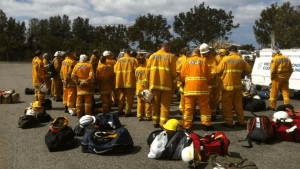One of my passions in my working life is exploring the idea of how we best prepare and maintain the physicality of individuals for the rigours of life as a police officer, a firefighter or as a soldier. In fact, any occupation that requires a level of physicality draws my interest and critically, how different organisations use testing to select those most likely to succeed in the job.
In 2017 I was fortunate to be awarded a Winston Churchill Trust Fellowship, where I visited the US, UK, Netherlands and Italy to investigate this very thing. How do we recruit those with the physical attributes required to do the job and then, when we select those individuals, how do we ensure that they remain physically resilient throughout their careers? I was lucky to talk to individuals from a range of backgrounds, all committed to recruiting the best and then retaining them by minimising injuries at work. While their approaches differed, all worked from the principle of testing the right things, at the right time based on evidence not guesswork.
If we look at fire services in Australia as an example, while the job is at its core very similar regardless of jurisdiction, every service has its own standards and ways to test individuals. This also appears to be the case for police services. So, although some differences occur, why is it that there is such a disparity in standards and testing procedures across the different services?
When testing the physicality of potential recruits therefore, two things need to be considered
1) Does this person have the necessary physical attributes that will ensure that they can successfully undertake the work tasks asked of them? Think dragging a hose or chasing a criminal over a fence.
2) Is this person sufficiently resilient to minimise the risk of injury at work, be that acute or chronic. For a firefighter, every time they step out of a truck they have ~23kg of equipment on them…
So back to my original question. Are we, as services employing tests that best support both of the above aims? And from there, how can we be sure that our tests are correct? In many jurisdictions around the world, employing a test requires the potential employer to present a justification for that test and also a justification for the standard that is being tested to. In fire services in the UK, the aerobic fitness standard equates to approximately 8.7 on a beep test. In Australia???
Many of our testing regimes have come from our history and in many cases the best guess of well-intentioned training staff. When these tests lack scientific credibility we are exposing ourselves to the risk of selecting the wrong people, both by including some duds and also excluding those who are likely to succeed. I look to the example of a female firefighter. Do we want one who can run 10 on a beep test or one who may be slightly less fit but has the strength and muscular endurance to do the day to day work of a firefighter?
My challenge therefore to all tactical services is this. Are your tests defensible from the standpoint of being valid assessments of the needs of your day to day work? How many of your tests are used to “test the ticker” of individuals rather than whether they will be able to do the job?
For anyone wishing to explore this concept, I am willing and available to work with you.






